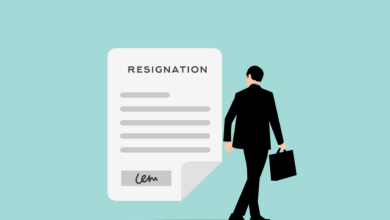How to Write a Proposal Letter

How to Write a Proposal Letter
Have you ever communicated a business idea and it did not get approved? Your method of communicating ideas in the business world affects how such an idea is viewed. It is necessary to write a clear, informative and persuasive proposal letter.
This article aims to show you how to write a proposal with a great structure.
What Is a Proposal Letter?
A proposal letter is a professional document that presents your business ideas to a substantial recipient who holds a decision-making role. It introduces an idea and tries to convince the reader to buy the idea.
When to Use a Proposal Letter
Proposal letters can serve a lot of purposes such as small-scale business projects, requests for loan, for marketing campaigns and plans and for requesting grants for research projects.
Why are Proposal Letters Important?
Proposal letters are important because they give a professional impression. When written in the right way, proposal letters can help the audience buy your idea and work towards it.
Read Other Hiring Tips you Might Have Missed
- Documents Required by Employers from Employees in the US
- Common Job Interview Questions
- List of High Paying Jobs and Industries in Nigeria
- Professional Career Tips for Young Adults
- Expert Tips for a Successful Career
Steps in Writing a Proposal Letter
What you write in the proposal letter depends on what kind of project is to be introduced. Follow these steps to write a great proposal. They are;
- Introduce yourself and provide background information.
- Outline your purpose for the proposal.
- Establish your goals and objectives.
- Highlight what sets you apart.
- Briefly review the budget and how funds will be used.
- Conclude with a call to action and request a follow-up.
- Close the letter and provide contact details.
-
Introduce yourself and provide background information:
Because you are trying to earn the interests of your readers, this paragraph should include information about your company and what the person will be reading. If the proposal was asked of you in a previous meeting, do well to state it.
-
Outline your purpose for the proposal:
Mention what you intend to accomplish or a challenge you intend to fix by writing the proposal. Why did you write the proposal? If it’s for a business, state the basic terms of arrangement.
-
Establish your goals and objectives:
Describe in details the long term results you plan to fulfill and the objectives you will establish to get you to better heights. Include figures if you have to. Here, you should talk about what you plan to do with the grant or loan. Give people an insight into what you want to achieve.
-
Highlight what sets you apart:
In order to have a better standing, you should list the valuable assets your company has. Showcase the special skills related to the project and state why you are the best for the loan. What makes your idea different from others? Use clear legible writing with bullets to outline these features.
-
Briefly review the budget and how funds will be used:
If your reason for the proposal was to get a loan, you should include your budget and how you intend on spending the fund. This may not need to include full costs, but providing basic details of the budget will make a good impression on the readers.
-
Conclude with a call to action and request follow-up:
A call to action is a plea that your reader takes immediate steps and creates a sense of urgency to approve your proposal. Doing this will increase the chances of getting their response or reply to your proposal. You can also state that you intend to follow them up, stating the day you will contact them. This makes it clear that you are serious about the proposal.
-
Close the letter and provide contact details:
Thank the readers or recipient for their consideration, and politely tell them to contact you at any point to entertain questions to clarify their doubts. End with a formal closing such as ‘Regards’ or ‘Sincerely’ followed by a comma, sign and write your name.
Proposal Template
You can follow this template when writing your proposal as a point of reference. Ensure you do not miss out important information and contact details.
-
- [Your name]
- [Company name if applicable]
- [Your address]
- [Date]
- [Recipient’s name]
- [Recipient’s company]
- [Recipient’s mailing address]
- [Greeting]
- Here in the second paragraph, state the purpose of your proposal. Include specific information and figures where necessary to make it clear.
- Paragraph three should show the target goals you plan to reach and list the objectives you have aligned to accomplish the set goals. State what you will do with the loan or grant.
- In the fourth paragraph, provide a summary of what makes your company or idea unique. In the following sentences, support your claims with specific examples of previous experiences you have had and your successes. Use numbers or bullets to quantify your success whenever possible.
- In the fifth paragraph, briefly discuss your budget, how you will allocate your loan or grant, or give an outline of the project’s cost to the recipient.
- In the sixth paragraph, give your recipient a call to action to persuade them to act on your proposal. Include the methods you intend to use to follow up and the time you plan on doing so.
- Your last or closing paragraph should be use to show appreciation and thank the reviewer for his time in reviewing the proposal. Include your contact information and let them know you are happy to answer any questions to clarify their doubts.
- Sign off
- Signature
Creating a proposal is the best way to professionally call for aid for your businesses. Following these steps and creating the perfect proposal will increase your chances of getting that loan or grant. I hope this article was useful. Leave a comment if you have any difficulty creating a proposal. Keep following Dailygam for more job tips.






